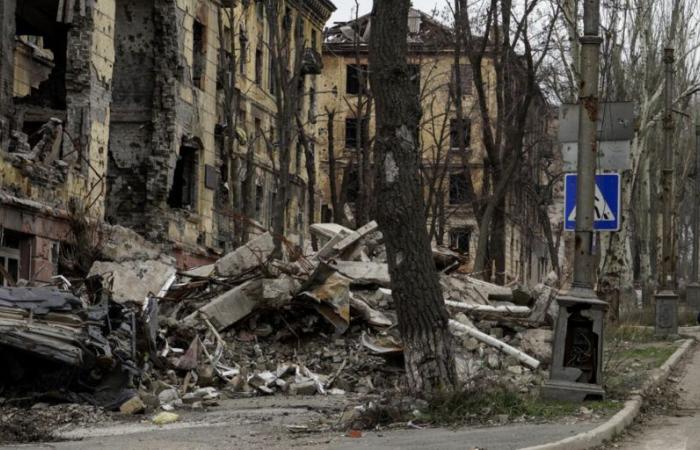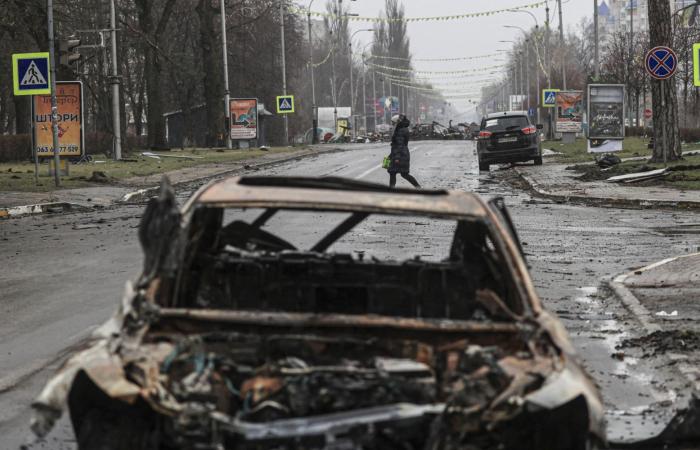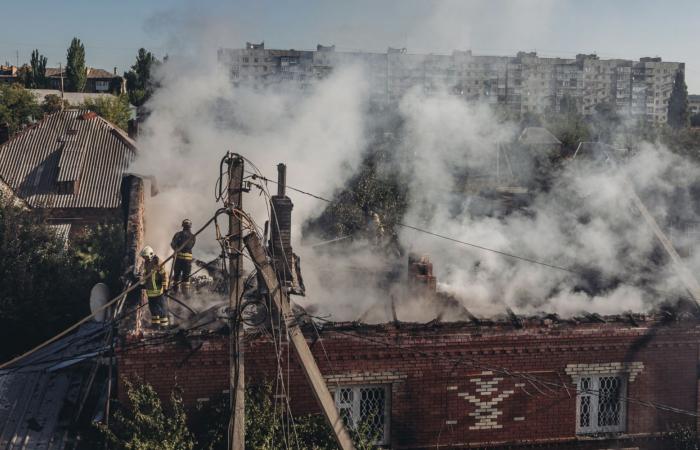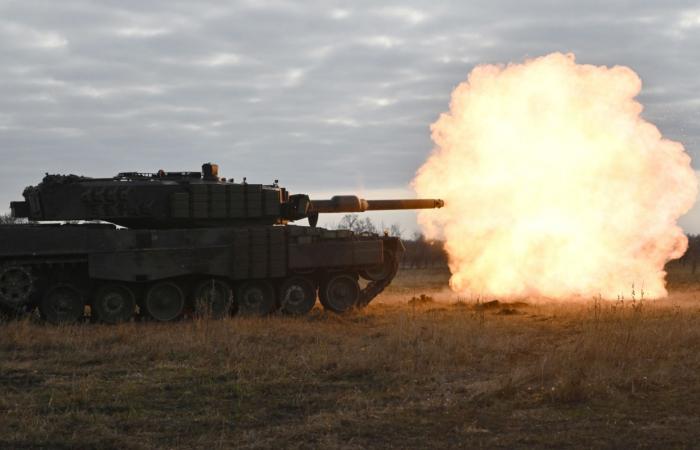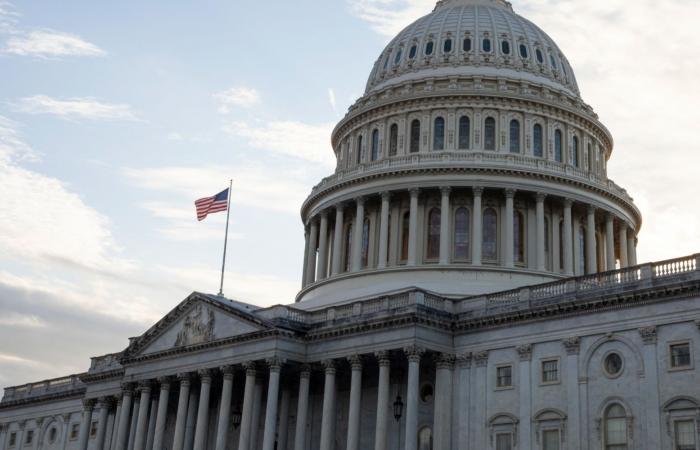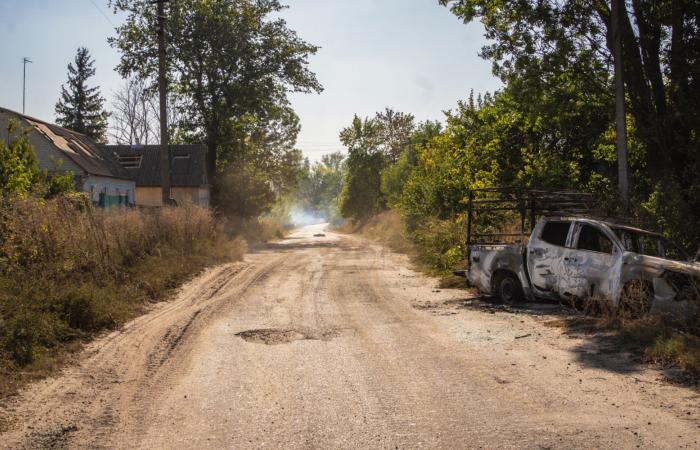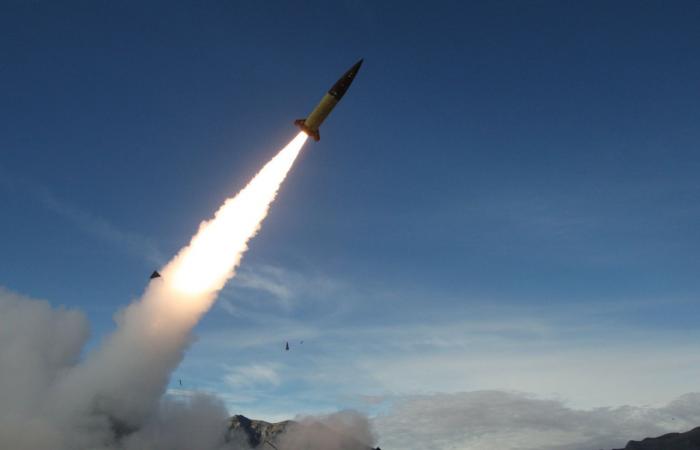Gauthier Delomez with AFP / Photo credits: STRINGER / AFP
06:00, November 19, 2024
Tens of thousands of deaths, and a conflict which enters its 1,000th day this Tuesday. The war between Moscow and kyiv continues, more than two years after the invasion of Ukraine decided by Vladimir Putin on February 24, 2022. Although the two camps do not communicate a total toll, according to the Wall Street Journalthis armed conflict left a million victims between dead and injured. Europe 1 returns to the main phases of the war in Ukraine until this Tuesday.
February 24, 2022: Vladimir Putin launches the Russian military operation in Ukraine
“I have made the decision for a military operation”: it is with these words that Russian President Vladimir Putin announces the start of the invasion of Ukraine, on the night of February 23 to 24, 2022 during a televised speech. In this speech, the master of the Kremlin justifies this operation by his desire to defend the separatists in eastern Ukraine, and “demilitarize and denazify” his pro-Western neighbor.
The Russian president recognized a few days earlier the independence of the self-proclaimed separatist “republics” in the Donetsk and Lugansk regions, in Donbass, where an armed conflict with the Ukrainian army has been underway since 2014. A major offensive magnitude is engaged. From kyiv, President Volodymyr Zelensky leads the resistance.
© Kremlin Press Service / Handout / ANADOLU AGENCY / Anadolu via AFP
The West is imposing a cascade of sanctions on Russia. At the same time, Brussels and Washington are releasing billions of euros to provide aid, starting with weapons, to Ukraine. Russian forces advance rapidly in the south, capturing Kherson in particular.
From March, they occupied the Zaporizhia nuclear power plant in the south, the largest in Europe, but failed to encircle kyiv and take Kharkiv (north-east), Ukraine’s second city.
April 2, 2022: horror scene in Boutcha
On April 2, the bodies of at least 20 civilians were discovered in a street in Boutcha, a suburb of the Ukrainian capital. It is the first in a series of macabre discoveries in towns deserted by Russian forces, which trigger an international outcry and investigations for war crimes attributed to Moscow, which denies any responsibility.
© Metin Aktas / ANADOLU AGENCY / Anadolu via AFP
Six days later, the Kramatorsk station, in the east of the country, was the victim of a Russian attack causing the death of at least 57 people. On May 21, Russia took the port city of Mariupol (south-east), after a devastating siege and the surrender of Ukrainian fighters holed up in the Azovstal steel factory.
June 2022: bloody battle in Bakhmut, Russian forces leave Kherson
At the end of August, Ukraine launched an offensive to retake Kherson and a bloody battle took place in the eastern town of Bakhmut, against the mercenaries of the Wagner group. In early September, the Russian army was forced into a humiliating retreat in the Kharkiv border region. On September 30, Vladimir Putin demanded the annexation of the regions of Lugansk, Donetsk, Kherson and Zaporizhia, without however completely controlling them. But, on November 9, the Russian army had to leave Kherson, taking refuge on the other bank of the Dnieper, the great river which crosses Ukraine.
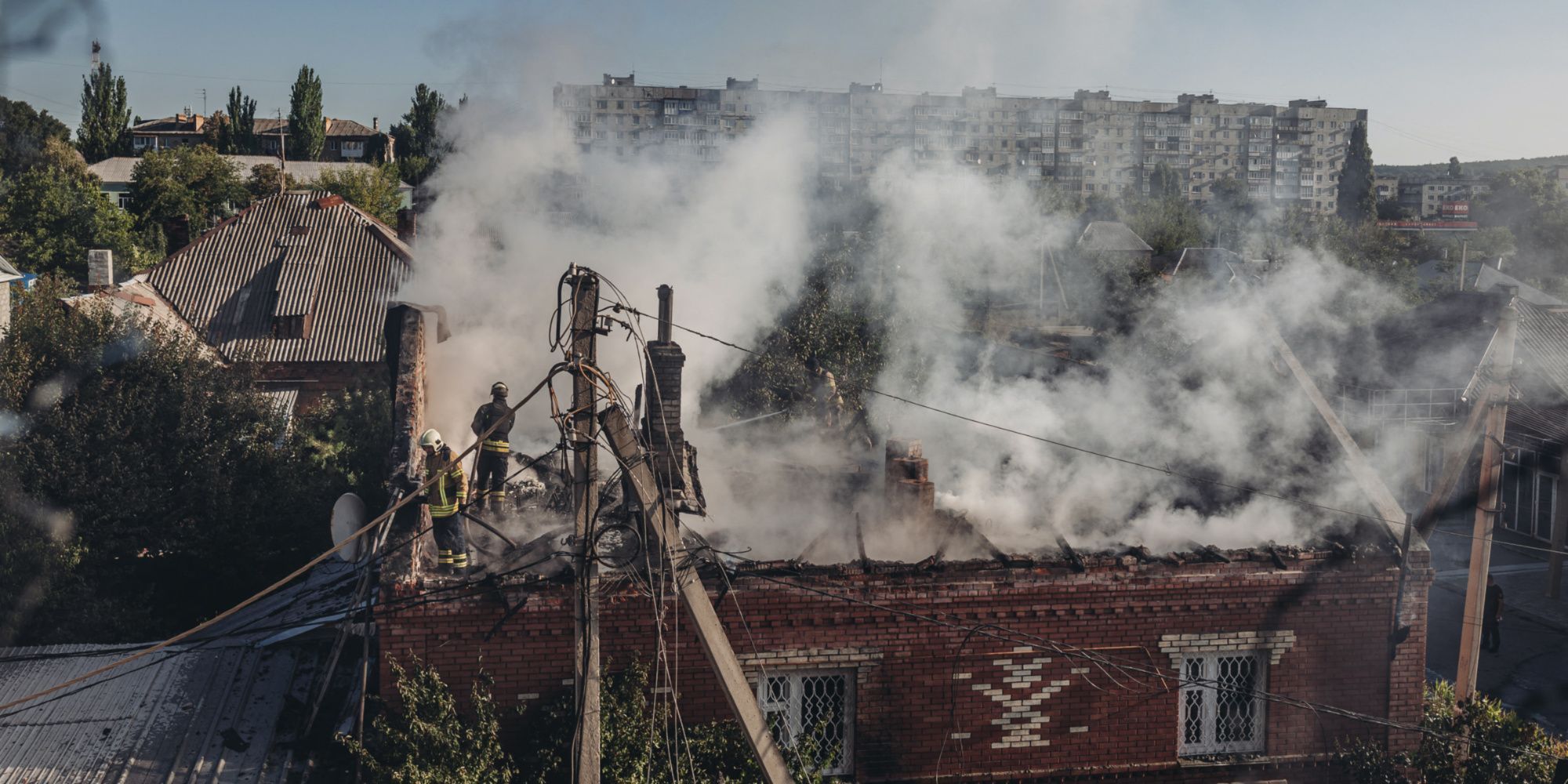
© Diego Herrera Carcedo / ANADOLU AGENCY / Anadolu via AFP
On November 15, a missile landed in Poland, a NATO member country, and killed two Polish civilians. Tension is growing on the international scene, because under Article 5 of the North Atlantic Treaty, aggression by a member country must provoke a reaction from other states. If Volodymyr Zelensky initially attributed this shot to Russia, this shot ultimately came from the Ukrainian anti-aircraft defense system, which was particularly in demand that evening.
Russia carries out massive bombings on Ukraine’s electricity grid throughout the winter, plunging millions of people into darkness and cold.
Early 2023: sending heavy tanks to Ukraine
In January 2023, the Russian army, reinforced by 300,000 reservists and Wagner’s paramilitaries, went on the offensive again, particularly in the Donbass. kyiv finally obtains modern heavy tanks from its allies, in particular German Leopards. In May, Washington promised Abrams tanks and authorized the delivery of F-16 fighter planes. Nevertheless, after months of carnage, Russia announced on May 20 that it had captured Bakhmut.

© Genya SAVILOV / AFP
February 2024: the Ukrainians withdraw from Avdiïvka after a first counter-offensive
Prepared for months, the Ukrainian counter-offensive began in June on the southern and eastern fronts, but came up against powerful defensive lines dug by the Russians. The operation is a failure. In mid-February 2024, the Ukrainian army withdrew from the fortress town of Avdiïvka, near Donetsk, offering Moscow its first significant territorial gain since the capture of Bakhmut. Since then, Russian soldiers have continued to gain ground in Donbass, the Kremlin’s priority target.
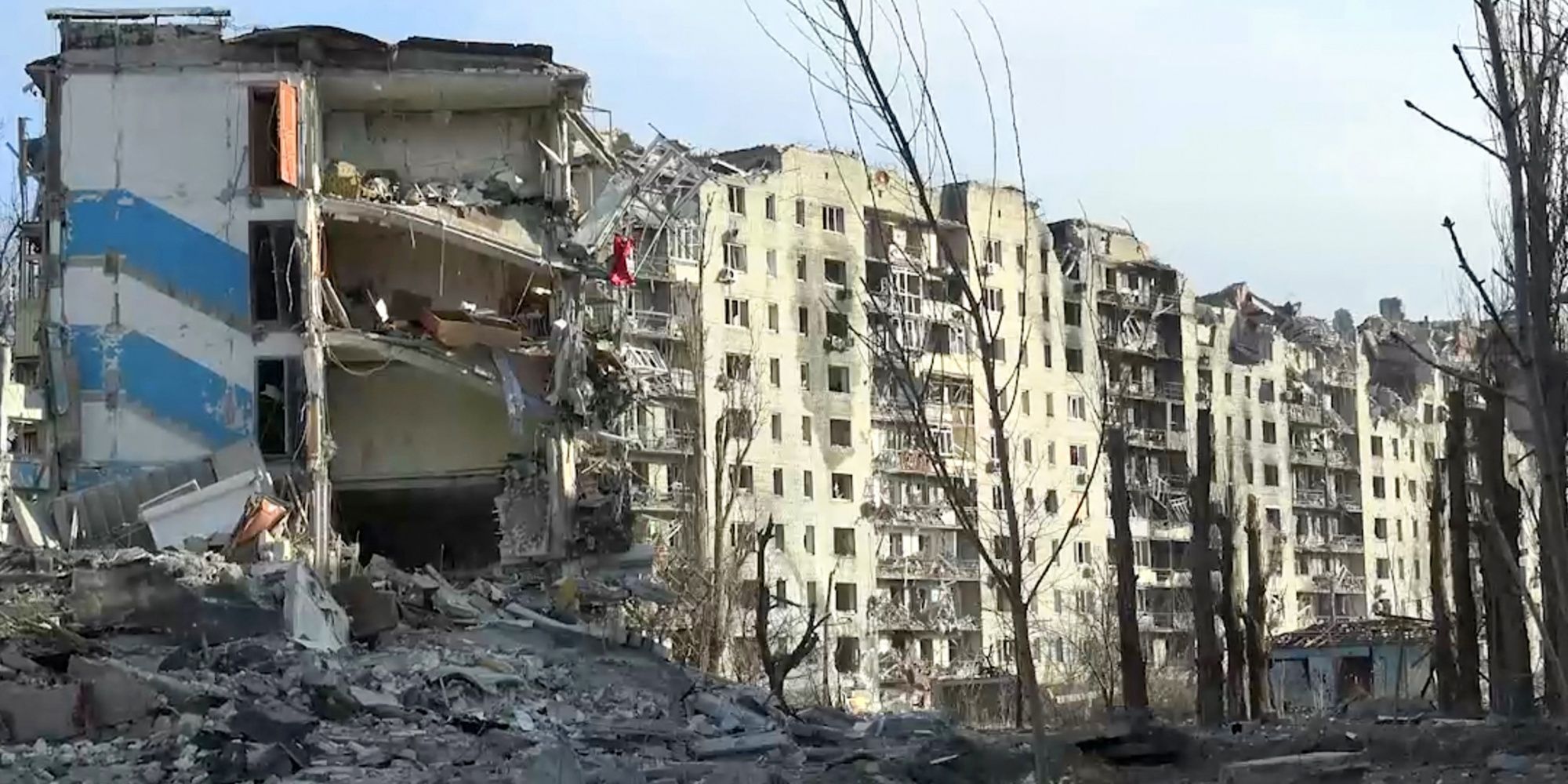
© Handout / TELEGRAM / @pushilindenis / AFP
Lacking men and ammunition in the face of a better-armed and more numerous adversary, the Ukrainian army is in difficulty and is calling on the West for help. Russia resumes strikes on the electricity grid in retaliation for Ukrainian bombing of its oil refineries.
April 2024: American aid of more than $60 billion approved in the House of Representatives
To increase the number of Ukrainian troops in the face of the Russian push, Ukrainian President Volodymyr Zelensky promulgates a controversial law facilitating enlistment and calls on the West, whose aid has dried up amid political quarrels, to prove that the Ukraine is “truly their ally”.
In Washington, after months of blockage, the House of Representatives finally approved on April 23 a crucial envelope of some 61 billion dollars. President Joe Biden promises Volodymyr Zelensky that this aid will arrive “quickly”. The Kremlin assures, for its part, that it will change “nothing” in the dynamics of the conflict.

© Aashish Kiphayet / NurPhoto / NurPhoto via AFP
August-September 2024: failure of a new Ukrainian counter-offensive
Despite the advance of Russian forces in eastern Ukraine, a surprise Ukrainian counter-offensive is organized in August 2024, in the Kursk region in Russia. Thus, 1,000 km² of territory are taken by kyiv. This advance ends up looking like an armed occupation in the face of a Russian power hesitant, even helpless in the tactical choices to oppose to kyiv on its own territory. The Russian army counterattacked on September 12, and eventually regained control of its various localities.

© Fermin Torrano / ANADOLU / Anadolu via AFP
November 17, 2024: green light from the United States for the use of long-range missiles
Announced by Vladimir Putin as a red line not to be crossed, the use of long-range missiles for Ukraine in Russia was granted by the United States on November 17, 2024, through Joe Biden. Russia promises an “appropriate” response on the battlefield in the event of kyiv firing these explosive devices, on the eve of the 1,000th day of the conflict.
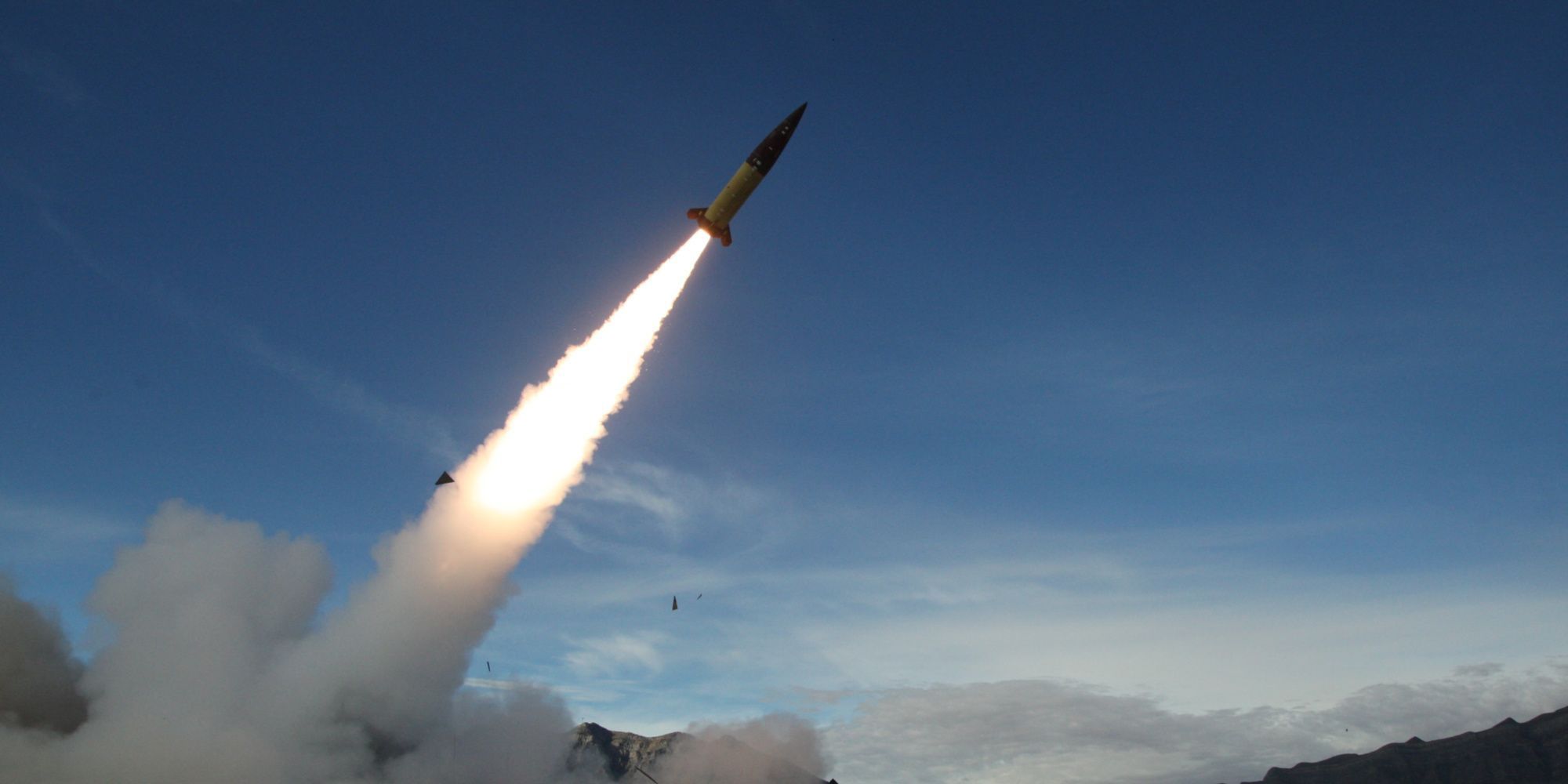
© John Hamilton / DoD / AFP

